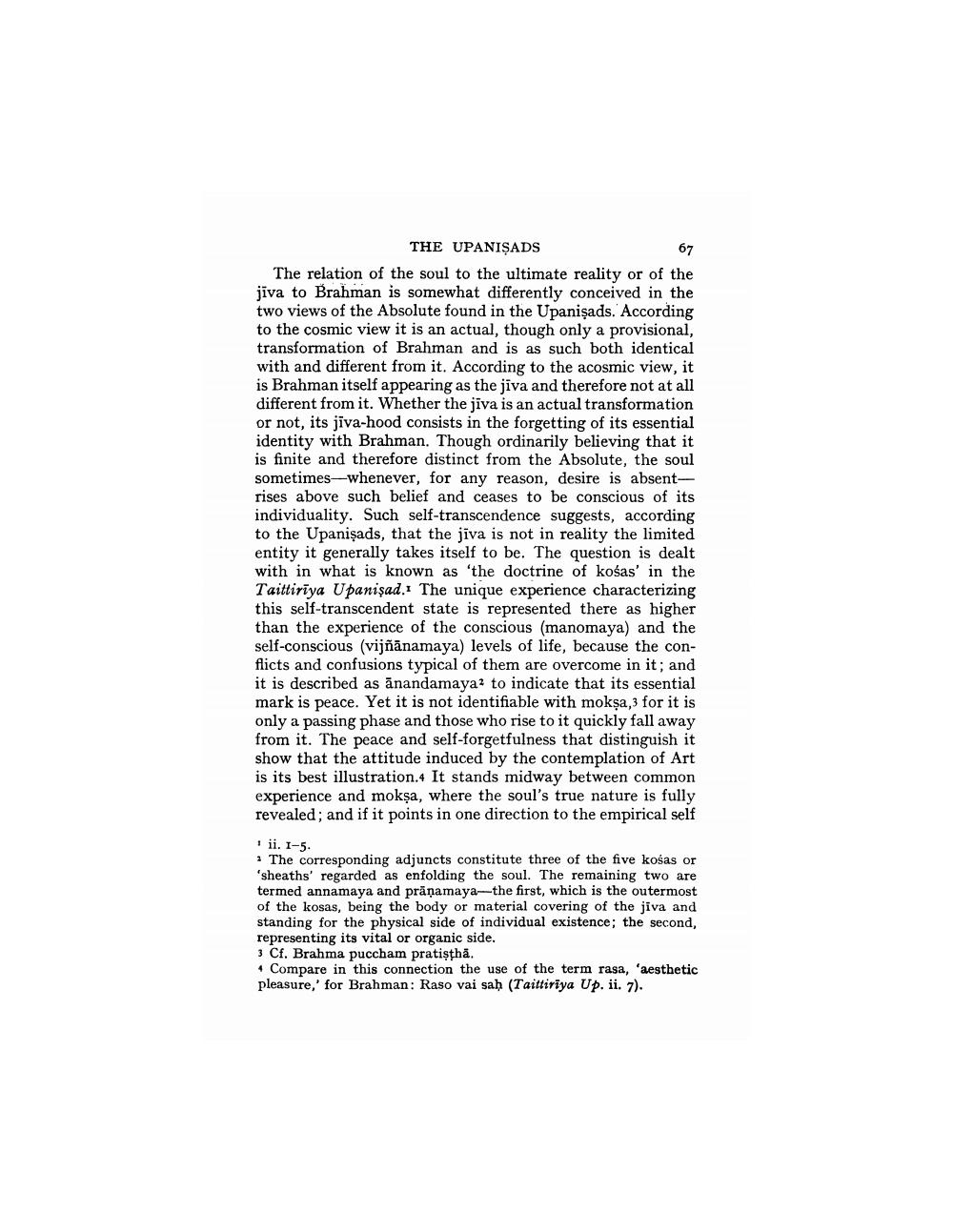________________
67
THE UPANISADS
The relation of the soul to the ultimate reality or of the jiva to Brahman is somewhat differently conceived in the two views of the Absolute found in the Upanisads. According to the cosmic view it is an actual, though only a provisional, transformation of Brahman and is as such both identical with and different from it. According to the acosmic view, it is Brahman itself appearing as the jiva and therefore not at all different from it. Whether the jiva is an actual transformation or not, its jiva-hood consists in the forgetting of its essential identity with Brahman. Though ordinarily believing that it is finite and therefore distinct from the Absolute, the soul sometimes whenever, for any reason, desire is absentrises above such belief and ceases to be conscious of its individuality. Such self-transcendence suggests, according to the Upanisads, that the jiva is not in reality the limited entity it generally takes itself to be. The question is dealt with in what is known as 'the doctrine of kośas' in the Taittiriya Upanisad. The unique experience characterizing this self-transcendent state is represented there as higher than the experience of the conscious (manomaya) and the self-conscious (vijñānamaya) levels of life, because the conflicts and confusions typical of them are overcome in it; and it is described as anandamaya? to indicate that its essential mark is peace. Yet it is not identifiable with mokşa,3 for it is only a passing phase and those who rise to it quickly fall away from it. The peace and self-forgetfulness that distinguish it show that the attitude induced by the contemplation of Art is its best illustration.4 It stands midway between common experience and mokşa, where the soul's true nature is fully revealed; and if it points in one direction to the empirical self
1 ii. 1-5.
2 The corresponding adjuncts constitute three of the five kosas or 'sheaths' regarded as enfolding the soul. The remaining two are termed annamaya and prāṇamaya-the first, which is the outermost of the kosas, being the body or material covering of the jiva and standing for the physical side of individual existence; the second, representing its vital or organic side.
3 Cf. Brahma puccham pratisthā.
4 Compare in this connection the use of the term rasa, 'aesthetic pleasure,' for Brahman: Raso vai saḥ (Taittiriya Up. ii. 7).




